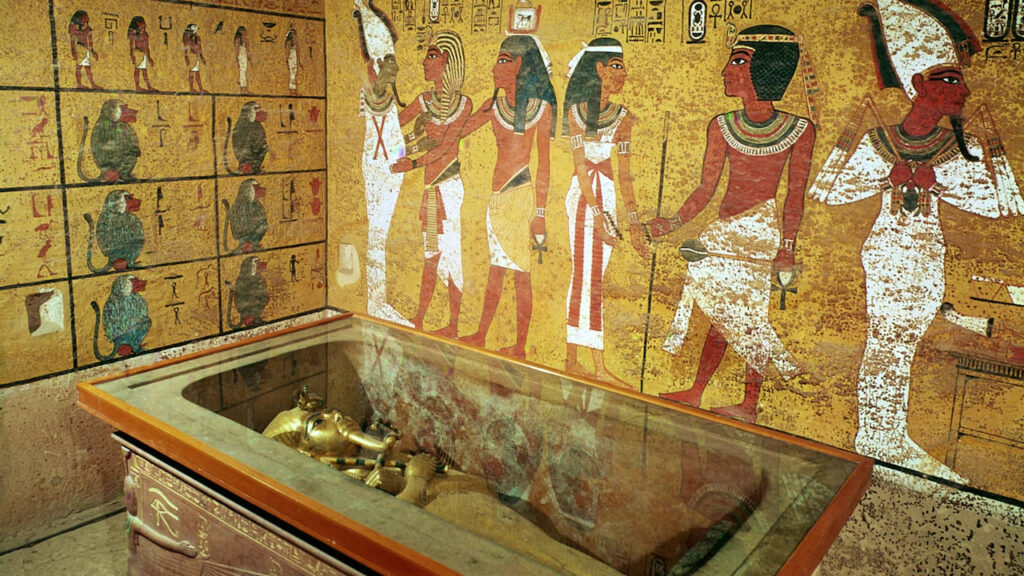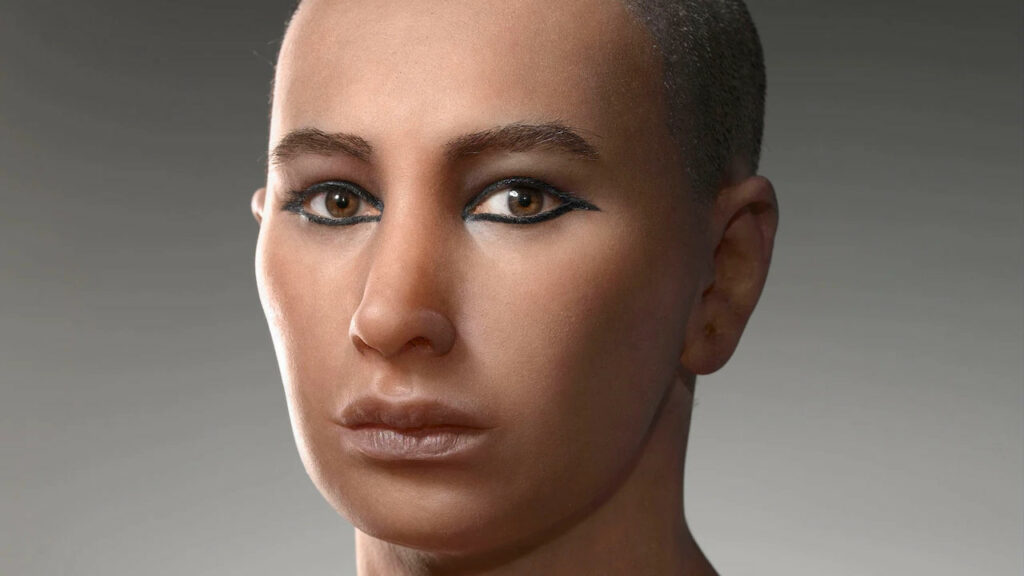The Coronation of a Young King
A young boy stands in a temple filled with burning incense, waiting for a priest to place a sparkling crown on his head. This ceremony is part of the coronation that will make the nine-year-old the pharaoh of ancient Egypt. His people will refer to him by his royal name: King Tutankhamun, commonly known as King Tut.


The Historic Discovery of King Tutankhamun
Tutankhamun became pharaoh in 1332 B.C. at the age of nine, ruling during a time of conflict between Egypt and the neighboring kingdom of Nubia. Nearly a decade after ascending to the throne, the young ruler died around the age of 18. However, little was known about Tutankhamun until 1922, when British archaeologist Howard Carter uncovered his tomb in Egypt’s Valley of the Kings.

The Nested Coffins
After years of searching, Carter found the greatest treasure within Tut’s tomb – a coffin that opened to reveal another coffin, and inside that, a third coffin made of gold. Inside lay Tut’s mummified body, untouched for over 3,000 years.

Investigating the Mystery of Tutankhamun’s Death
Damage to the Mummy
Shortly after the mummy’s discovery, archaeologists trying to remove Tutankhamun’s body from the sticky sacred oils coating his coffin accidentally damaged the mummy, complicating the determination of the cause of death.

Theories and Modern Analysis
Some speculated that he was murdered by poisoning, but modern technologies like 3D scanning showed that the young king was in poor health and even had a broken leg. Experts theorize that Tut may have fallen from a chariot and, with a weakened immune system, succumbed to an infection from his injury.
The Continuing Mystery
However, archaeologists are not yet ready to declare the mystery solved. Without historical records detailing the events, we may never uncover the complete truth behind Tut’s death. Regardless, the treasures found in King Tut’s tomb have ensured his status as the most famous mummy in the world.

